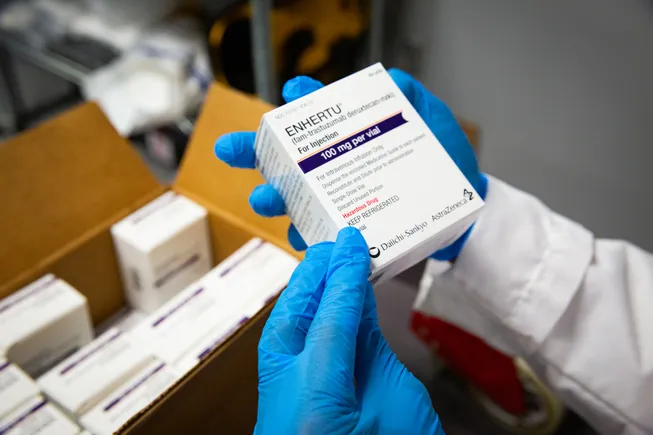Nimbus raises $125M to advance rival to Bristol Myersâ new psoriasis drug


Nimbus Therapeutics has raised $125 million in fresh funding to bring its top drug prospect into late-stage clinical testing.
The company’s lead candidate blocks an enzyme known as TYK2, which triggers cell signaling pathways that are involved in inflammation and has become a top target for drugmakers. The drug is currently in Phase 2 testing for plaque psoriasis and psoriatic arthritis.
The latest round of funding will support an expansion into Phase 3 trials, plus additional Phase 2 studies for autoimmune disorders such as lupus.
Nimbus aims to prove its drug can compete with Bristol Myers Squibb’s Sotyktu, which last week became the first TYK2 inhibitor approved when the Food and Drug Administration cleared it for moderate-to-severe plaque psoriasis.
Nimbus CEO Jeb Keiper claims his company’s candidate is more selective than Bristol Myers’ pill. “They explored a variety of doses and focused on quite a low dose,” he said of Sotyktu, in an interview. “They likely left efficacy on the table and we certainly believe we can go after that.”
The market prospects for TYK2 inhibitors were boosted by the FDA’s labeling for Sotyktu, as the regulator didn’t put strict warnings around its use. That outcome had been a concern of analysts and investors, as TYK2 belongs to a family of proteins known as Janus kinases, or JAKs, that are the target of autoimmune disease drugs from Pfizer, Eli Lilly and AbbVie. These JAK inhibitors have come under scrutiny after testing of Pfizer’s drug in rheumatoid arthritis linked it to serious cardivoascular events and cancer.
JAK inhibitors are also associated with serious infections and blood clots.
That the FDA didn’t add similar warnings on Sotyktu is a “near best-case” scenario for developers of second-generation TYK2 blockers like Nimbus, Ventyx Biosciences, Alumis and others, wrote Stifel analyst Alex Thompson in a note to clients. Ventyx shares surged more than 60% on Monday.
Nimbus has stayed private since launching in 2009, receiving more than $1 billion in funding from partnerships, venture rounds and other acquisitions, Keiper said. Most notably, Gilead Sciences paid the company $400 million in 2016 for rights to a drug it developed for the liver disease nonalcoholic steatohepatitis.
Bain Capital Life Sciences and SV Health Investors joined as new investors in the company’s latest financing. The round also included previous backers like Atlas Venture, which co-founded the company 13 years ago, and Pfizer’s venture arm.
“Nimbus has a remarkable track record of success in discovering and developing differentiated small molecule therapies to address substantial unmet medical needs, and we’re excited to support their current portfolio of programs,” Nikola Trbovic, a partner at SV Health Investors, said in a statement.
Keiper is confident in Nimbus’ private fundraising strategy, but has not ruled out taking the company public in the future — though not any time soon.
“I would never say never,” Keiper said.
In the meantime, competition is growing among developers of TYK2 inhibitors. Ventyx recently announced results from a Phase 1 trial of its TYK2-targeting drug. Alumis, which was formerly known as Esker Therapeutics, has raised nearly $300 million to develop a more targeted TYK2 blocker.
Established pharmaceutical firms are involved, too. Galapagos is developing one, as was Pfizer until last year, when it spun out two experimental TYK2 inhibitors into a new company that was in June revealed as Priovant Therapeutics.
Bristol Myers had had access to Nimbus’ TYK2 inhibitor after it inherited a research collaboration through its 2019 acquisition of Celgene. But the smaller company in 2021 accused Bristol Myers of anticompetitive behavior given the pharma company’s interest in advancing the drug candidate that became Sotyktu.
The companies later settled, resolving their legal claims against each other and allowing Nimbus to retain rights to its drug.
This post has been syndicated from a third-party source. View the original article here.




